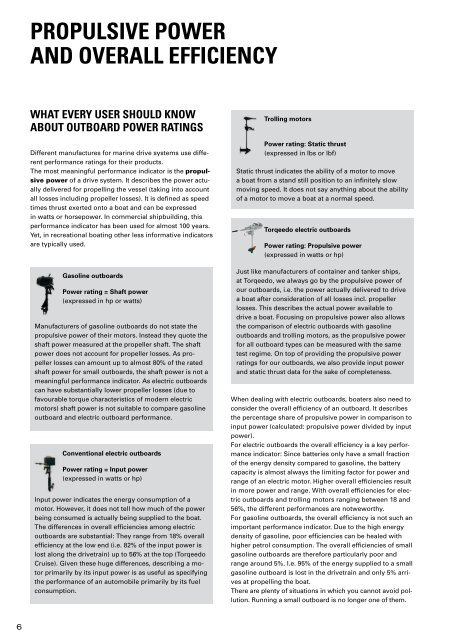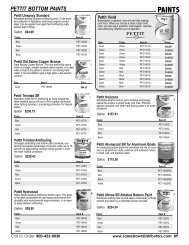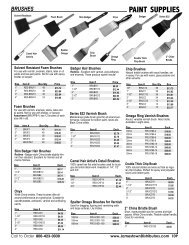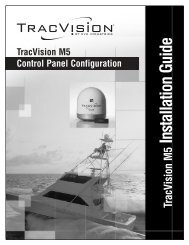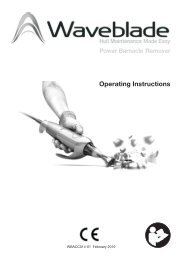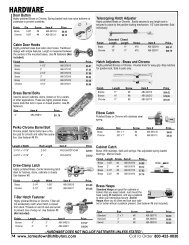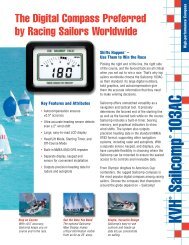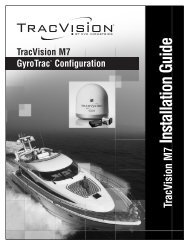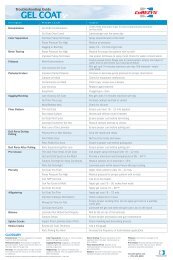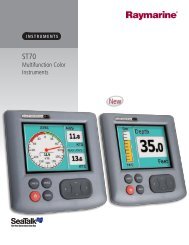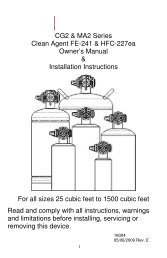CATALOG 2011 - George Kniest
CATALOG 2011 - George Kniest
CATALOG 2011 - George Kniest
You also want an ePaper? Increase the reach of your titles
YUMPU automatically turns print PDFs into web optimized ePapers that Google loves.
PROPULSIVE POWER<br />
AND OVERALL EFFICIENCY<br />
WHAT EVERY USER SHOULD KNOW<br />
ABOUT OUTBOARD POWER RATINGS<br />
Different manufactures for marine drive systems use different<br />
performance ratings for their products.<br />
The most meaningful performance indicator is the propulsive<br />
power of a drive system. It describes the power actually<br />
delivered for propelling the vessel (taking into account<br />
all losses including propeller losses). It is defined as speed<br />
times thrust exerted onto a boat and can be expressed<br />
in watts or horsepower. In commercial shipbuilding, this<br />
performance indicator has been used for almost 100 years.<br />
Yet, in recreational boating other less informative indicators<br />
are typically used.<br />
Gasoline outboards<br />
Power rating = Shaft power<br />
(expressed in hp or watts)<br />
Manufacturers of gasoline outboards do not state the<br />
propulsive power of their motors. Instead they quote the<br />
shaft power measured at the propeller shaft. The shaft<br />
power does not account for propeller losses. As propeller<br />
losses can amount up to almost 80% of the rated<br />
shaft power for small outboards, the shaft power is not a<br />
meaningful performance indicator. As electric outboards<br />
can have substantially lower propeller losses (due to<br />
favourable torque characteristics of modern electric<br />
motors) shaft power is not suitable to compare gasoline<br />
outboard and electric outboard performance.<br />
Conventional electric outboards<br />
Power rating = Input power<br />
(expressed in watts or hp)<br />
Input power indicates the energy consumption of a<br />
motor. However, it does not tell how much of the power<br />
being consumed is actually being supplied to the boat.<br />
The differences in overall efficiencies among electric<br />
outboards are substantial: They range from 18% overall<br />
efficiency at the low end (i.e. 82% of the input power is<br />
lost along the drivetrain) up to 56% at the top (Torqeedo<br />
Cruise). Given these huge differences, describing a motor<br />
primarily by its input power is as useful as specifying<br />
the performance of an automobile primarily by its fuel<br />
consumption.<br />
Trolling motors<br />
Power rating: Static thrust<br />
(expressed in lbs or lbf)<br />
Static thrust indicates the ability of a motor to move<br />
a boat from a stand still position to an infinitely slow<br />
moving speed. It does not say anything about the ability<br />
of a motor to move a boat at a normal speed.<br />
Torqeedo electric outboards<br />
Power rating: Propulsive power<br />
(expressed in watts or hp)<br />
Just like manufacturers of container and tanker ships,<br />
at Torqeedo, we always go by the propulsive power of<br />
our outboards, i.e. the power actually delivered to drive<br />
a boat after consideration of all losses incl. propeller<br />
losses. This describes the actual power available to<br />
drive a boat. Focusing on propulsive power also allows<br />
the comparison of electric outboards with gasoline<br />
outboards and trolling motors, as the propulsive power<br />
for all outboard types can be measured with the same<br />
test regime. On top of providing the propulsive power<br />
ratings for our outboards, we also provide input power<br />
and static thrust data for the sake of completeness.<br />
When dealing with electric outboards, boaters also need to<br />
consider the overall efficiency of an outboard. It describes<br />
the percentage share of propulsive power in comparison to<br />
input power (calculated: propulsive power divided by input<br />
power).<br />
For electric outboards the overall efficiency is a key performance<br />
indicator: Since batteries only have a small fraction<br />
of the energy density compared to gasoline, the battery<br />
capacity is almost always the limiting factor for power and<br />
range of an electric motor. Higher overall efficiencies result<br />
in more power and range. With overall efficiencies for electric<br />
outboards and trolling motors ranging between 18 and<br />
56%, the different performances are notweworthy.<br />
For gasoline outboards, the overall efficiency is not such an<br />
important performance indicator. Due to the high energy<br />
density of gasoline, poor efficiencies can be healed with<br />
higher petrol consumption. The overall efficiencies of small<br />
gasoline outboards are therefore particularly poor and<br />
range around 5%. I.e. 95% of the energy supplied to a small<br />
gasoline outboard is lost in the drivetrain and only 5% arrives<br />
at propelling the boat.<br />
There are plenty of situations in which you cannot avoid pollution.<br />
Running a small outboard is no longer one of them.<br />
6


